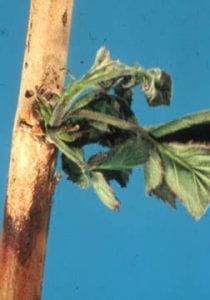Wilting of the upper parts of canes with lower parts unaffected may result from different causes that are for the most part readily distinguishable. These include:
Flat-headed Cane Borers such as the Rednecked Cane Borer or Bronze Cane Borer do not girdle canes as does the Raspberry Cane Borer. Adults of both insects feed along leaf edges. Females insert eggs into young canes. Borer larva, or grubs, hatch and tunnel inside the cane while feeding. This causes a symmetrical gall or swelling to form.
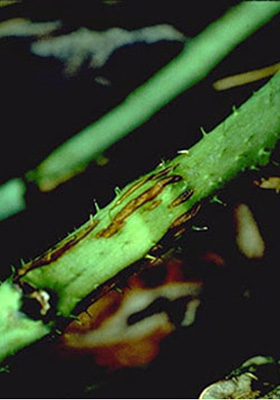
Canes are weakened, wilting above the swelling, and sometimes breaking off.
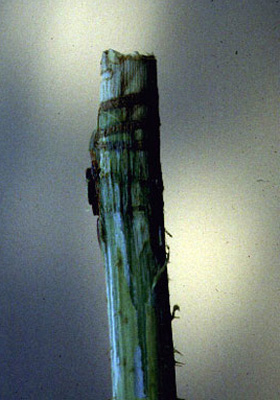
Yellowing of upper portion of fruiting cane; lower portion of cane remains unaffected.
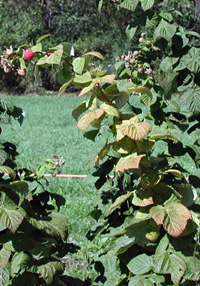
Removal of leaves reveals borer swelling.

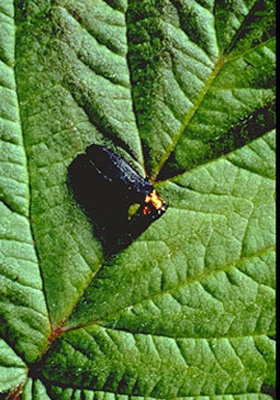

More Raspberry Cane Borer (Girdler) and Rednecked Cane Borer information
Integrative Pest Management of Raspberry Cane Borers (University of Connecticut)

Tree crickets of several species lay eggs in canes, often causing the portion above the eggs to die. Oecanthus fultoni, the Snowy Tree Cricket, is the most common in causing damage to raspberries in the Northeastern US and Canada.
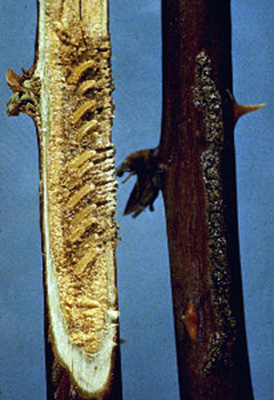
Cane Blight, a fungal disease, can infect canes and girdle them, causing the upper portion of the canes to die.




